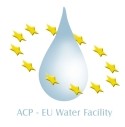Integrated Water Resource Management
Integrated Water Resources Management Programme
 Water is essential for human health, economic development and the environment that is the base of our survival. Water has come under increasing pressure from rising, diversified demands and threats from intensified human activities and development in a wide range of sectors (agriculture, climate variability, land-use changes, domestic and industrial use, urbanisation, etc.).
Water is essential for human health, economic development and the environment that is the base of our survival. Water has come under increasing pressure from rising, diversified demands and threats from intensified human activities and development in a wide range of sectors (agriculture, climate variability, land-use changes, domestic and industrial use, urbanisation, etc.).
Water is a resource that is always in motion, and as such it affects and is impacted by many different environments and human activities. In spite of this, water resources management has traditionally been fragmented where different related issues and sectors have been managed in isolation. This has resulted in mismatched and sometimes even conflicting approaches, big gaps in management, and duplication of effort. A lack of linkages between national and local level management has also led to big gaps between national policy and on-the-ground implementation.
Countries all around the world have therefore recognised the need to move towards an integrated approach to water resources management which brings together different sectors and stakeholders to plan and manage water resources together. This is why integrated water resources management or IWRM has been highlighted as part of the Millennium Development Goals and the Pacific Regional Action Plan on Sustainable Water Management, which has been put forward by the Pacific Island governments as the roadmap for securing water for sustainable development.
Integrated Water Resources Management (IWRM) is an approach to:
 Water is essential for human health, economic development and the environment that is the base of our survival. Water has come under increasing pressure from rising, diversified demands and threats from intensified human activities and development in a wide range of sectors (agriculture, climate variability, land-use changes, domestic and industrial use, urbanisation, etc.).
Water is essential for human health, economic development and the environment that is the base of our survival. Water has come under increasing pressure from rising, diversified demands and threats from intensified human activities and development in a wide range of sectors (agriculture, climate variability, land-use changes, domestic and industrial use, urbanisation, etc.).Water is a resource that is always in motion, and as such it affects and is impacted by many different environments and human activities. In spite of this, water resources management has traditionally been fragmented where different related issues and sectors have been managed in isolation. This has resulted in mismatched and sometimes even conflicting approaches, big gaps in management, and duplication of effort. A lack of linkages between national and local level management has also led to big gaps between national policy and on-the-ground implementation.
Countries all around the world have therefore recognised the need to move towards an integrated approach to water resources management which brings together different sectors and stakeholders to plan and manage water resources together. This is why integrated water resources management or IWRM has been highlighted as part of the Millennium Development Goals and the Pacific Regional Action Plan on Sustainable Water Management, which has been put forward by the Pacific Island governments as the roadmap for securing water for sustainable development.
Integrated Water Resources Management (IWRM) is an approach to:
- Take into account all the physical, social and economic linkages of water with nature and humans, along its route from raindrop to ocean
- Work towards balancing water demands for environment, human health and economic development, to minimise conflict and ensure optimal, equitable and sustainable use
- Bring together government and stakeholders from different sectors and social groups, to plan and manage water in a coordinated, gender balanced and participatory manner
 |
 |
 |
 |
 |
















